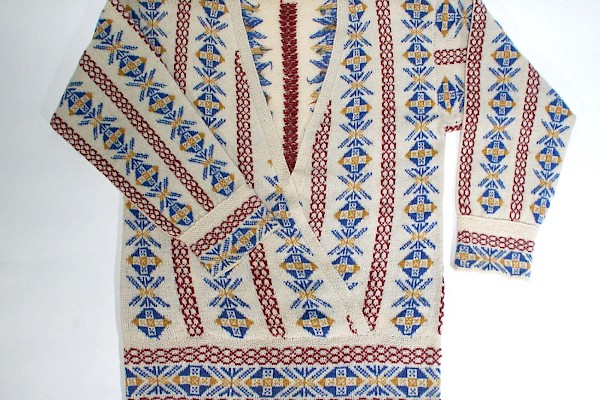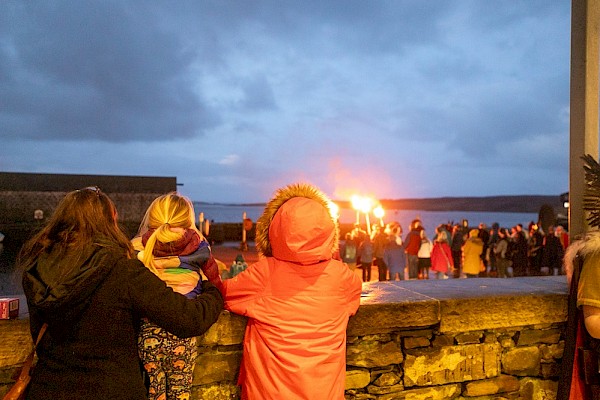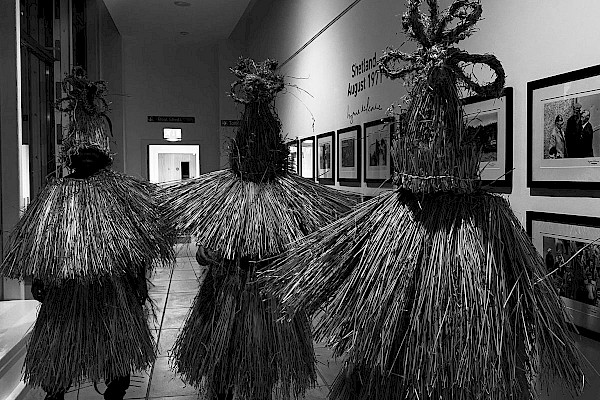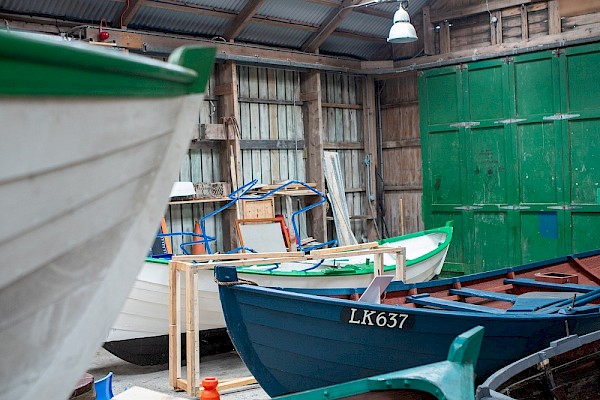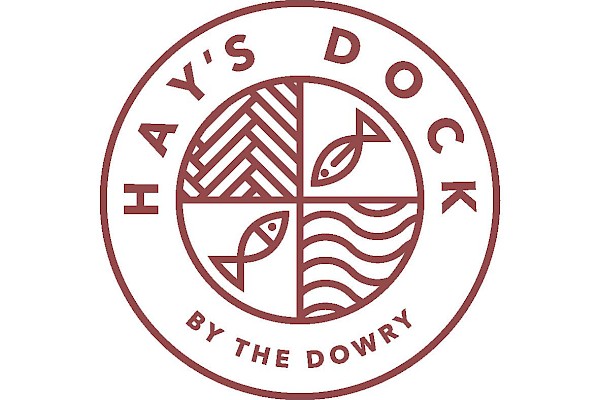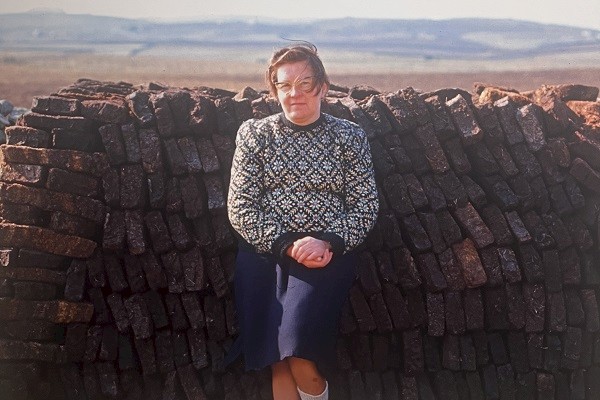The Laurel
The Shetland Times, 12 October 1907 reported an important event at the Ness. Harry Irvine of Glenfield got a Fifie fishing boat, the Laurel. Built in Sandhaven in 1902, and operated there by F. (probably Francis) Watt, as FR 962, it became LK 680. It was an optimistic time in the South Mainland, where the population had actually increased – unlike in many parts of Shetland. This was largely due to the herring industry, and the Laurel was to pursue the herring for the almost the next half century.
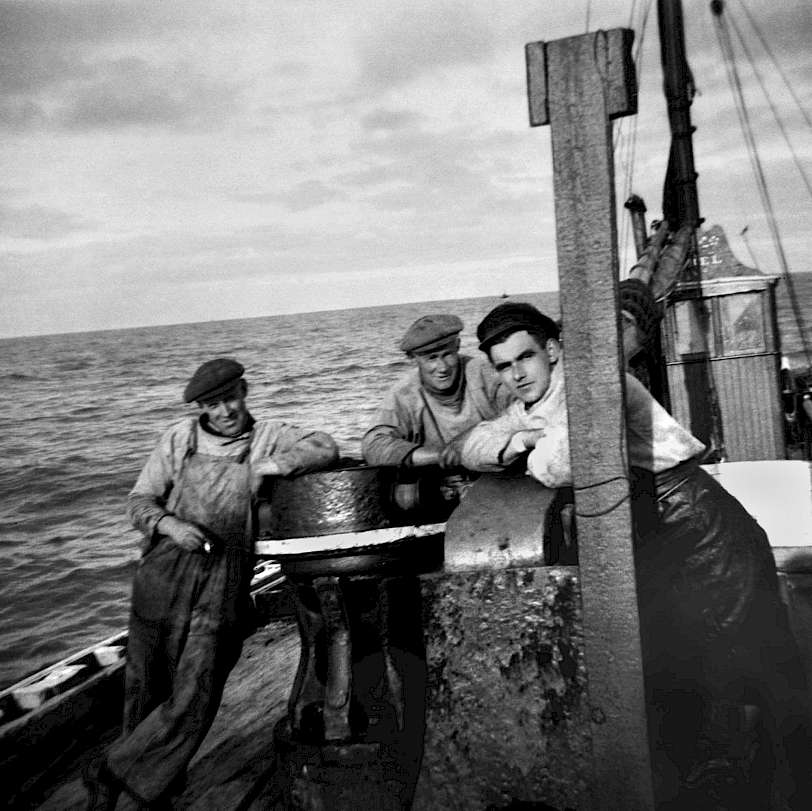
The initial owner was Sinclair Johnston, a Lerwick draper who used the slogan Sinclair Johnston’s trousers are coming down for his sales. In 1919 the owners were Harry (1858-1947) and George Arthur Irvine (1881-1953) – father and son – and two Scalloway men – Laurence Williamson and William Ross Smith. Harry Irvine was the first skipper, George in 1919, Harry again in 1920, with George for 1926-1934, and finally Alex Flaws of Gusseltoon from 1935-1955.
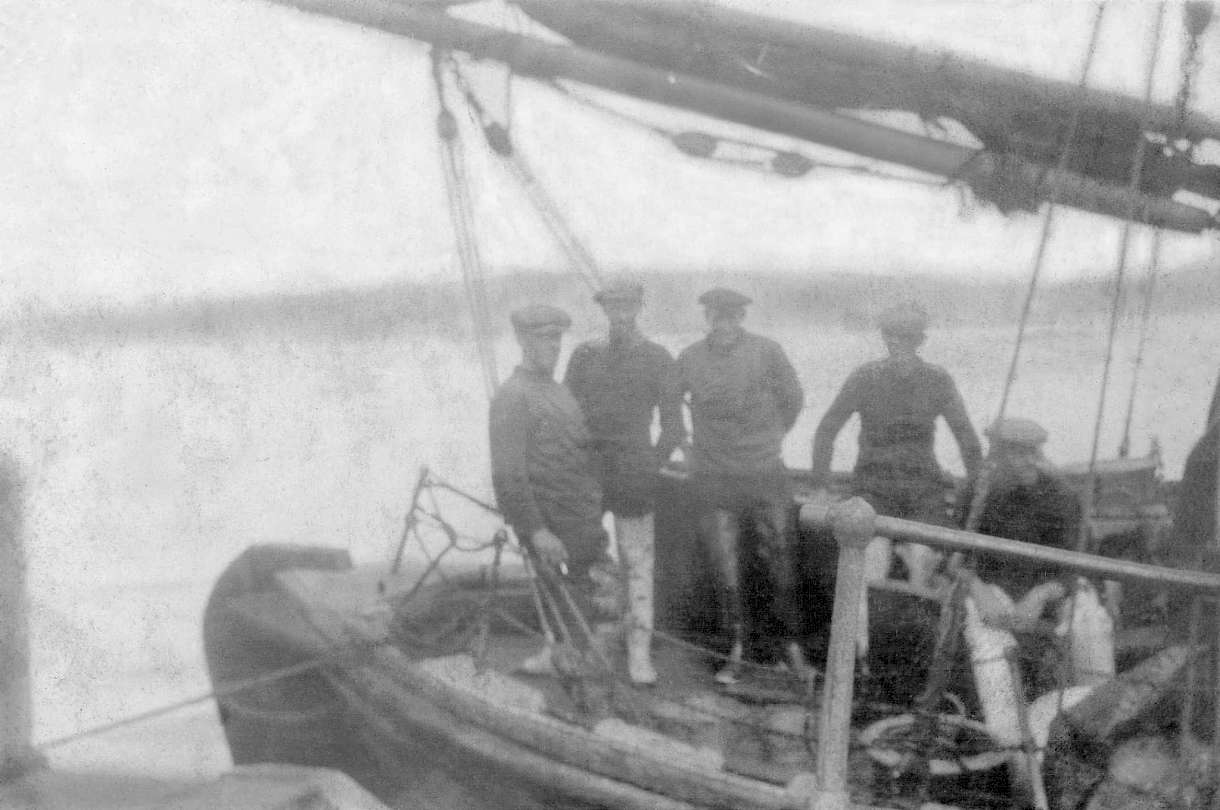
Crew of the Laurel LK 680, 1940s; Harry Irvine, Peter Sinclair (Outvoe), George Robert Smith (Troswick), George Burgess, Alex Flaws (skipper).
Alex Flaws was a distinguished mariner. He had served in the RNR in World War One, and again in World War Two as skipper of HMT Cape Melville. He was awarded a DSC for rescuing crew from the collier Rubislaw, mined in the Thames in November 1939.
The Laurel worked as a sailboat. Press reports show her doing well. A report from July 1909 has her landing 50 crans at Lerwick, and in October a report from Sandwick suggested that she was one of a number of boats with average earnings probably not far short of £500. In July 1910 she was reported to have earned £440 up to the present time. In 1920, the Laurel got a Gardner engine, extending her working life.
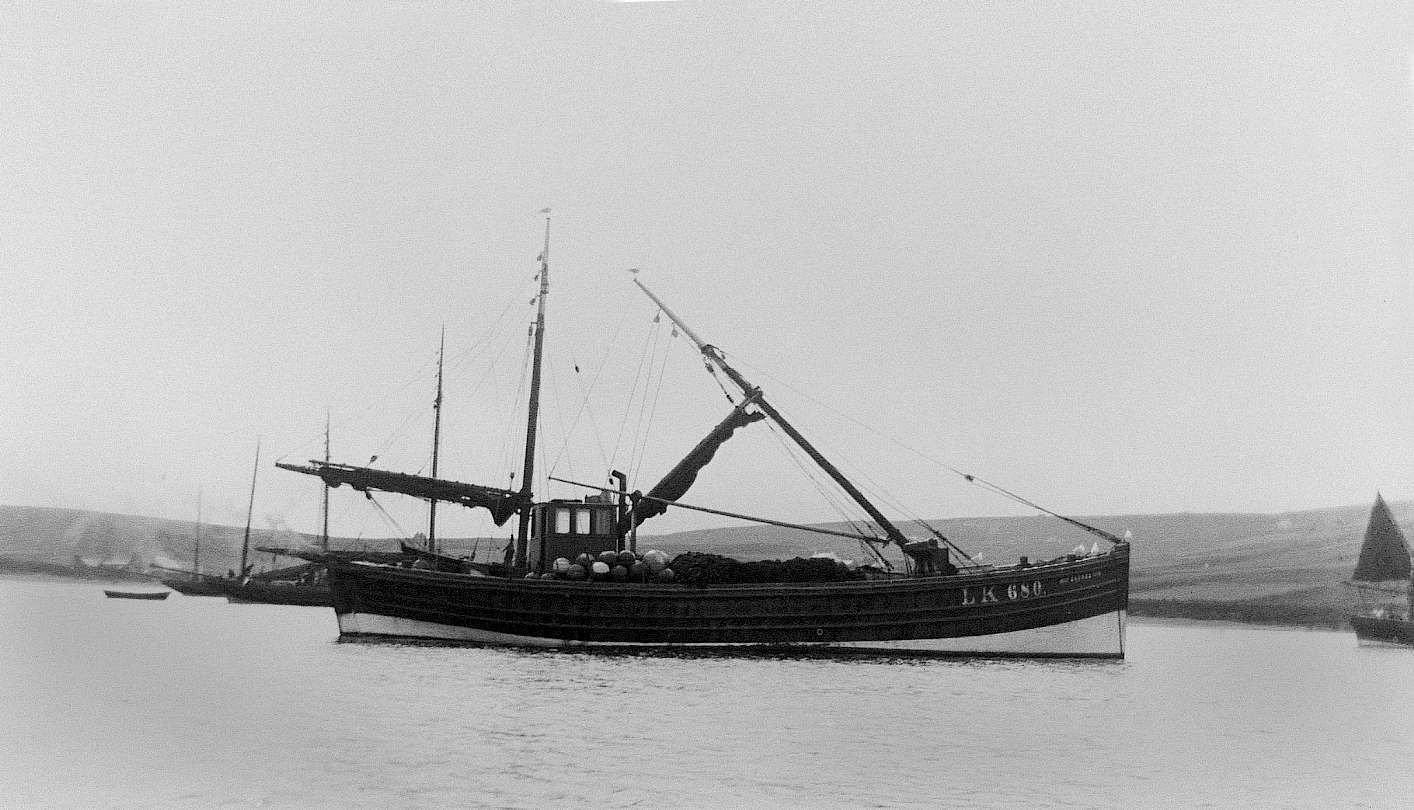
LK 680 anchored at Levenwick in 1922. Beyond her is LK 1104 SUNSHINE. Photographed by Bertie McLaughlan.
If the herring industry had been better between the wars the Laurel would probably have been replaced. When World War Two came skipper Flaws went into the Royal Navy and the Laurel was laid up. She was once advertised for sale, but nothing came of it, and she went back into action when the war finished.
In June 1946 she got her biggest shot of 191 cran. In 1955, the Shetland Times of 26 August reported that the old Laurel had 120 [cran]. The Laurel was keeping her end up at age 53. Alex Flaws was 63, Robert Smith of Troswick and John Sinclair of Outvoe, also on the boat, were 64. When the Laurel developed a problem with a leak they had to decide on whether it was worth repairing for the next season. Nearing retirement age they decided against.
The end of the Laurel came when she was taken to Aithsvoe, Cunningsburgh, for scrapping. Or not quite, as she never got completely dismantled and parts of her remained there for decades. The Laurel’s capstan was one of those surviving items, and when the time came to restore LK 243, the Swan, the capstan was uplifted and put to a new use. Part of the Laurel lived on at sea on a fellow Fifie.
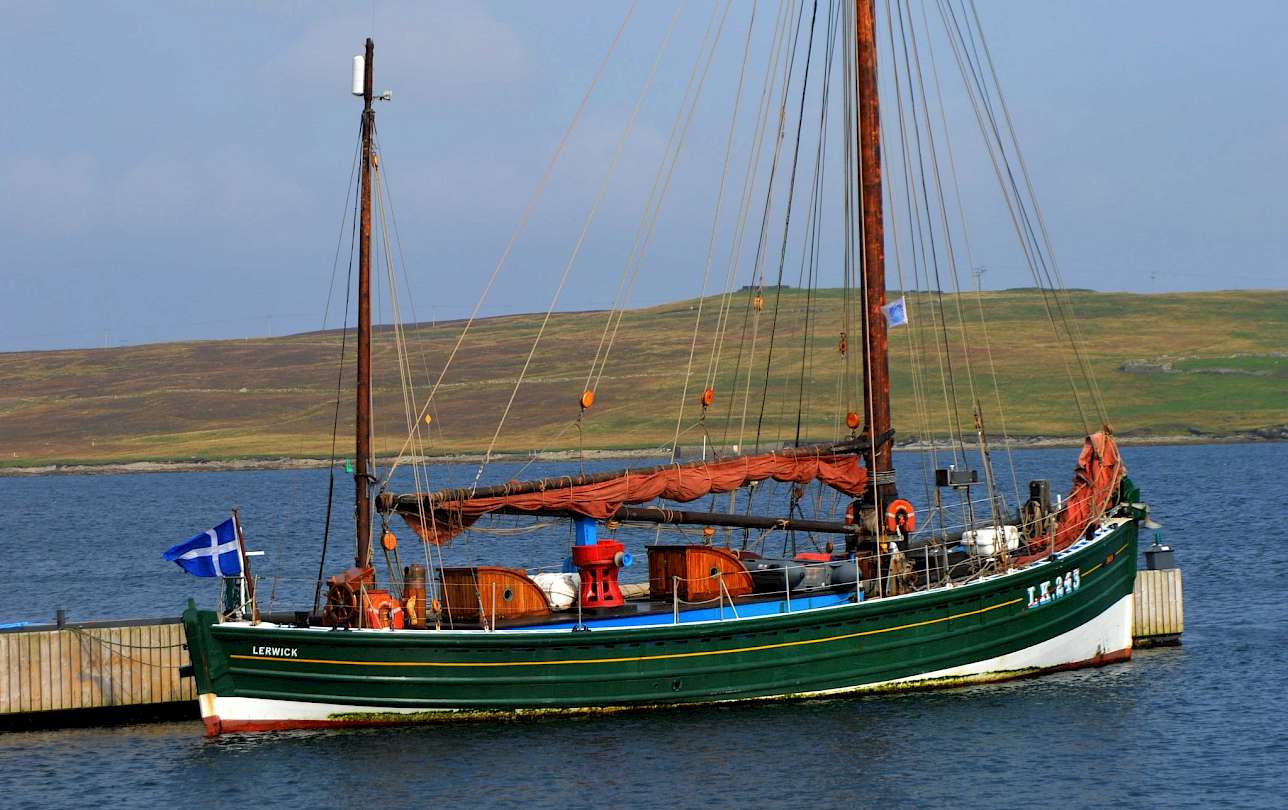
LK 243 Swan in Lerwick, September 2014, the Laurel's capstan brightly visible in red.
Note – Many thanks are due to Willie Flaws of Dunrossness for his help.
